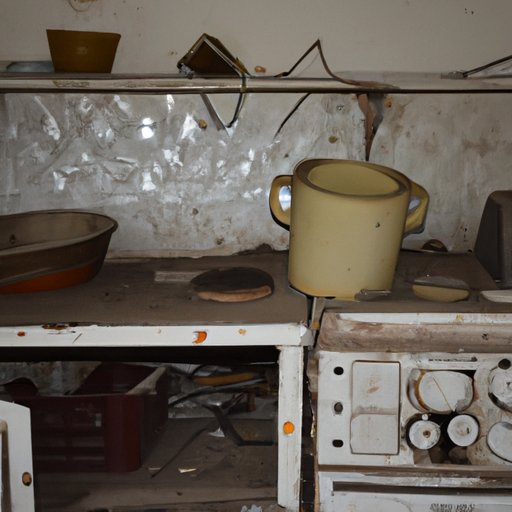Introduction
A ghost kitchen is a space that is exclusively used for food preparation and delivery, with no dining area or takeout services. It is a great way to expand a restaurant’s reach without needing to invest in a physical location. With the rise of delivery services like Uber Eats, Grubhub, and DoorDash, ghost kitchens have become increasingly popular.
The benefits of starting a ghost kitchen include lower overhead costs, more efficient use of space, and increased revenue potential. In this article, we’ll explore the necessary supplies and equipment needed to start a ghost kitchen, as well as the costs involved.
Necessary Supplies and Equipment
When it comes to starting a ghost kitchen, you’ll need certain supplies and equipment. According to a study by the National Restaurant Association, commercial-grade kitchen appliances and equipment are essential for any successful restaurant operation. This includes items such as ovens, fryers, grills, refrigerators, and storage units.
In addition to these items, you’ll need utensils, pots, pans, and other kitchen tools. You’ll also need containers and packaging materials for food delivery. Finally, you’ll need cleaning supplies such as detergents, disinfectants, and sanitizers.
Costs Involved in Starting a Ghost Kitchen
The cost of starting a ghost kitchen depends on the size and scope of your operation. The National Restaurant Association estimates that the cost of opening a restaurant ranges from $200,000 to $1 million. However, since you won’t be investing in a physical location for your ghost kitchen, the costs will be significantly less.
The major costs associated with starting a ghost kitchen include purchasing the necessary supplies and equipment, renting a space, and hiring staff. You’ll also need to factor in the cost of food and ingredients, as well as marketing expenses. Depending on the size of your operation, you may also need to invest in an online ordering system.
Potential Challenges
Starting a ghost kitchen isn’t without its challenges. One major challenge is finding the right space. You’ll need to make sure that the space is large enough to accommodate all the necessary equipment and supplies, as well as any staff you may be hiring.
You’ll also need to consider the competition. With the rise of ghost kitchens, there is increased competition for customers. It’s important to identify your target market and create a marketing strategy to set yourself apart from the competition.
Finally, you’ll need to ensure that your kitchen meets health and safety regulations. This includes having the appropriate licenses and permits, as well as adhering to food safety guidelines. It’s also important to invest in proper training for your staff to ensure that they understand the importance of following food safety protocols.
Conclusion
Starting a ghost kitchen can be an exciting venture. By understanding the necessary supplies and equipment, as well as the costs involved, you can be better prepared for success. It’s also important to be aware of the potential challenges and develop strategies to overcome them. With the right planning and preparation, you can create a successful ghost kitchen.
(Note: Is this article not meeting your expectations? Do you have knowledge or insights to share? Unlock new opportunities and expand your reach by joining our authors team. Click Registration to join us and share your expertise with our readers.)
